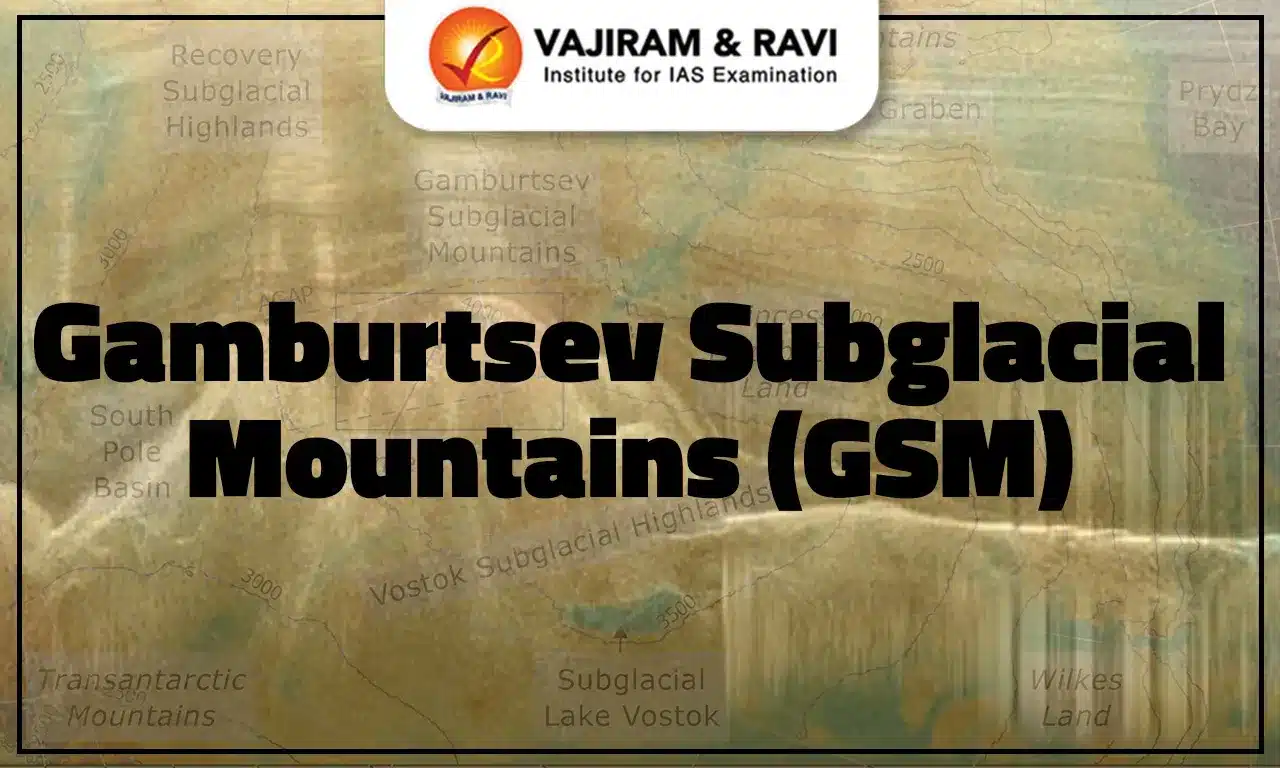Gamburtsev Subglacial Mountains Latest News
New data published in Earth and Planetary Science Letters reveals the Gamburtsev Subglacial Mountains (GSM) were formed over 500 million years ago, during the assembly of the Gondwana supercontinent.
What are the Gamburtsev Subglacial Mountains (GSM)?
- The Gamburtsev Subglacial Mountains are a completely buried mountain range beneath the East Antarctic Ice Sheet, located at its highest point.
- These mountains were first discovered in 1958 by a Soviet seismic expedition.
- Unlike the Transantarctic Mountains, which are partially visible above the ice, the Gamburtsev Mountains remain entirely buried, concealed under several kilometres of ice.
- Typically, mountains form at tectonic plate boundaries due to collision or subduction, but East Antarctica has remained tectonically stable for hundreds of millions of years.
- The existence of such a massive mountain range within a stable craton posed a major puzzle for geologists.
Zircon “Time Capsules” and Dating Evidence
- Scientists analysed zircon grains from sandstones deposited by ancient rivers flowing from the mountains, collected from the Prince Charles Mountains.
- Zircons contain trace uranium, which decays at a known radioactive rate, enabling accurate age determination.
- Findings show:
- Uplift began ~650 million years ago
- Himalayan-scale peaks reached ~580 million years ago
- Crustal melting and flow ceased ~500 million years ago.
Gamburtsev Subglacial Mountains FAQs
Q1: Where are the Gamburtsev Subglacial Mountains located?
Ans: The Gamburtsev Subglacial Mountains lie beneath the East Antarctic Ice Sheet, completely buried under ice.
Q2: How were these mountains discovered?
Ans: They were first discovered in 1958 during the International Geophysical Year by a Soviet expedition using seismic surveys.
Source: DTE
Last updated on June, 2025
→ UPSC Notification 2025 was released on 22nd January 2025.
→ UPSC Prelims Result 2025 is out now for the CSE held on 25 May 2025.
→ UPSC Prelims Question Paper 2025 and Unofficial Prelims Answer Key 2025 are available now.
→ UPSC Calendar 2026 is released on 15th May, 2025.
→ The UPSC Vacancy 2025 were released 1129, out of which 979 were for UPSC CSE and remaining 150 are for UPSC IFoS.
→ UPSC Mains 2025 will be conducted on 22nd August 2025.
→ UPSC Prelims 2026 will be conducted on 24th May, 2026 & UPSC Mains 2026 will be conducted on 21st August 2026.
→ The UPSC Selection Process is of 3 stages-Prelims, Mains and Interview.
→ UPSC Result 2024 is released with latest UPSC Marksheet 2024. Check Now!
→ UPSC Toppers List 2024 is released now. Shakti Dubey is UPSC AIR 1 2024 Topper.
→ Also check Best IAS Coaching in Delhi
Tags: Gamburtsev Subglacial Mountains Prelims Pointers upsc prelims current affairs
























